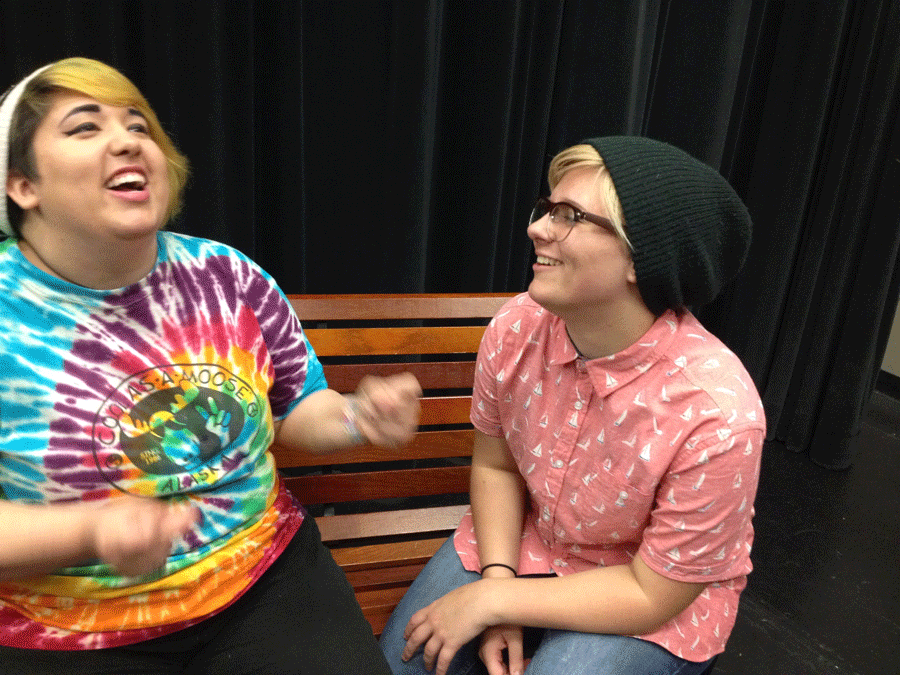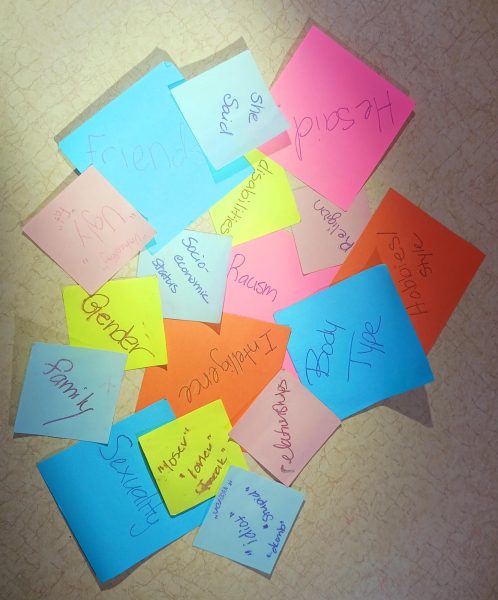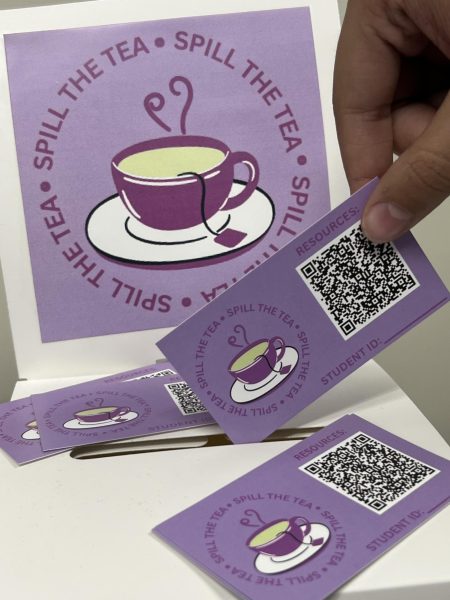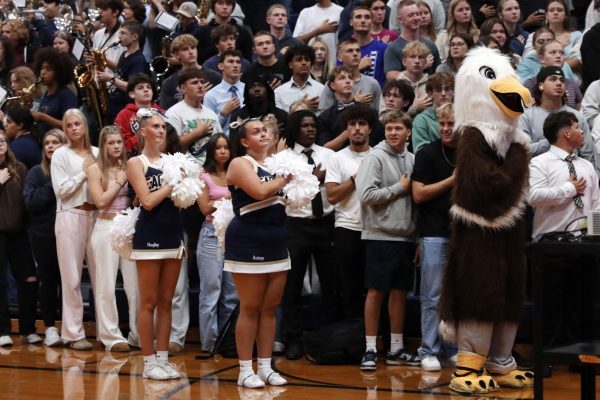Babes Outside The Binary
Knutsen and Walton discuss their lives in Mr. Moberly’s room during their lunch
As a society we are programmed to assume that people will either fall under the “male” or “female” gender. Our bathroom signs read “boys” and “girls”. People see a person who seems to be “feminine” or “masculine” and they absentmindedly pronounce the expected gender. This habit, however, is slowly being tested by the rise of true identity. Many people are coming out as transgender, agender, non-binary, etc. instead of cisgender. At Arlington High School, people with these identities, specifically non-binary identities, are letting themselves be known.
Tegan Knutsen (10) and Olive Walton (10) identify as “they,” one of the most common non-binary pronouns used currently (others include hir, ze, etc.). For Knutsen, using “they” felt right for them. “It’s an easy and comfortable pronoun to remember. Some people use “ze” and “zem,” but they didn’t feel right for me.” Walton chose “they” as well because it is “used in verbal context in daily communication.”
“I knew that I was trans in 8th grade” said Walton. “I identified as a boy for a year, but I knew I wasn’t 100% a boy. I spent a long time finding a title, but eventually I decided to just be.” Knutsen’s discovery was much the same; “I knew that I didn’t identify with either male or female. I just knew I was me.” This process of self-identity is not abnormal, but in fact quite common. Not everyone fits into the mass of given sexual identity, and it becoming more widely accepted to be open and honest with the gender people feel best fits with who they are. Along with gender-identification often comes a new name that allows the individual to have a title that is non-gender specific.
Despite the slow-happening changes in society, many individuals struggle for support of their pronouns and name changes from their friends, families, and teachers. “It was hard with my name change – people were upset about it” said Knutsen. “I chose Tegan because it fit more with my personality and was gender-neutral.” Walton went through a recent name change as well. “I chose the name Olive because it’s between the name Olivia and Oliver.” They consider it their “happy middle ground.” Thankfully both Knutsen and Olive have received support. “A lot of my friends are supportive, and some of my friends are non-binary as well” said Knutsen.
As both individuals expressed, gender is fluid and can be identified in many different forms. Knutsen said that people should “feel free to experiment” and to not “let people tell you who you are…If you used to identify as cis and you are now binary, that’s okay.” Our society, until this point, has been ruled with the focus of “she” and “him” aspects. Our view, however, is changing and an endless horizon of gender and sexual identity is upon us. Our respect for newfound self-identity is of the utmost importance to our ever changing lives.Knutsen said that before they identified, “it was almost there but not quite.” Now, however, “it feels right.”







